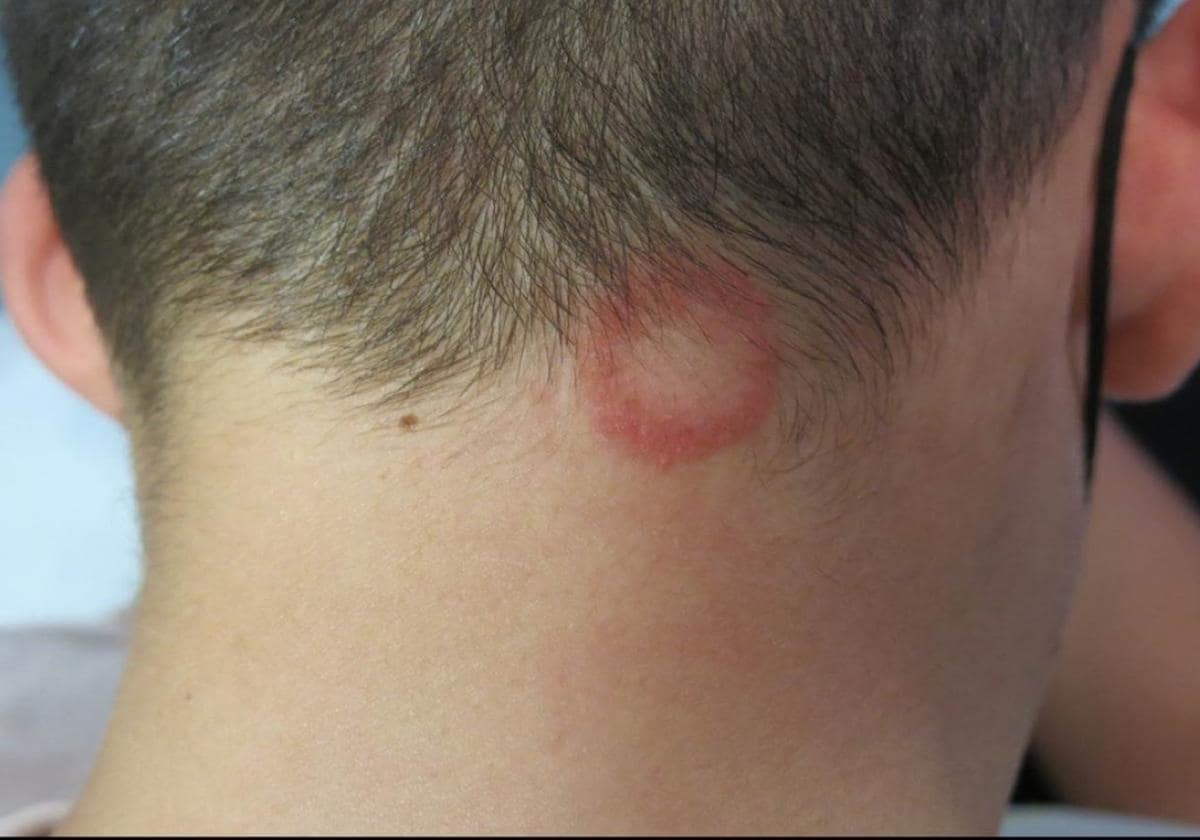Cases of scalp ringworm caught at low-cost hairdressers, experts warn - Surinenglish.com

Iván Gelibter
Friday, 17 March 2023, 10:44
It could be psoriasis or seborrheic dermatitis, but if a reddish circle appears on the back of the neck it may be something different. Dermatologists in Malaga are warning that there have been dozens of cases of tinea capitis recently; otherwise known as ringworm, this is a contagious condition caused by a fungus which affects the scalp, and practically all the patients these specialists have seen have something in common: they have been going to low-cost hairdressers to have and maintain an undercut, slicked-back hairstyle.
Dr José Ignacio Galvañ, who was one of the first dermatologists in Spain to detect this outbreak, says that for years the main cause of tinea capitis was through zoophilic fungi such as Microsporum canis, which is very common in animals and especially cats. However, after a while he began to suspect that these cases were different and the clinic he runs started to carry out their own mycological testing.
"We can say clearly that we are seeing an increase in tinea capitis due to an anthropophilic species of fungus," he says. In other words, it is passed from person to person, rather than from an animal to a human.
Tests on the patients revealed that this type of ringworm is spread from one person to another and not caught from animals
This type of tinea has been very common in Africa and the USA for some years now, but it was very unusual in Spain or elsewhere in Europe.
After investigating further, Dr Galvañ was able to confirm that this type of ringworm which affects the scalp is called Trichophyton Tonsurans. In his clinic alone he has seen dozens of recent cases, and it became obvious that there was a pattern: every one of these patients was a male who had had an undercut, slicked-back hairstyle.
This is a style which is in fashion internationally, with short, shaved hair at the sides and back of the head and long on the top and in the front. It means going to the hairdresser at least once a week to maintain it, and that can increase the contact the client has with razors which are infected.
In 100 per cent of these cases seen at Dr Galvañ's clinic, the patients had gone to a low-cost hairdresser.
"We examined and carried out tests on all the patients," says this specialist. The test is a simple and painless technique which involves taking a scraping from the affected area and then analysing it.
Anthropophilic fungus
"This is what helped us to realise that we were looking at an anthropophilic fungus, where the infection is passed from one person to another, and not the zoophilic type which people catch from animals," Dr Galvañ explains.
The most common symptoms of this ringworm are scaly lesions to the back and sides of the head. They look very similar to psoriasis or seborrhoeic dermatitis, and that led some specialists to treat the condition with topical corticosteroids. "That actually made it worse," he admits.
"Less frequently, patients came with inflammatory tinea or the so-called black dot tinea, where the affected area appears to be speckled with black dots " he says. The latter, which are sometimes imperceptible, often act as asymptomatic carriers.
Far from being identified at just one clinic, cases of scalp ringworm have been detected all over the province, the Dermatology Department at the Clínico Hospital has confirmed. In recent months specialists there have seen a significant increase in cases.
Although as yet there are no specific figures, the dermatologists agree that the patient profile is the same: men who have had an undercut, slicked-back hairstyles at low-cost hairdressers.
Chain of transmission
For this reason, Dr Galvañ says it is important for hairdressers to be aware of this problem, and the health authorities must be able to identify and cut off the chain of transmission.
He also recommends that if anyone suspects that they may have tinea capitis, they should consult a specialist.
With regard to the short-term future, Dr Galvañ presented a report on this situation at the annual meeting of the Spanish Academy of Dermatology and Venereology in Granada on 10 and 11 March, to call for further study and improved approach to what he describes as an "epidemic" which is occurring for the first time ever in Spain.
At the meeting he was awarded a prize for the Best Scientific Study Award for his pioneering research carried out in his private practice between 2021 and 2022, "with his own resources and for the love of medicine".
He studied twenty-six cases of this contagious disease and found that in most cases, the patients were asymptomatic. Thirty-eight per cent were diagnosed with tinea capitis, an eczema-like skin complaint. But he also found cases of tinea connubialis, in which the patient was affected after their partner had gone to the hairdresser (31%); inflammatory ringworm (8%), and even a case of a one-year-old girl with what appeared to be a cradle cap, which finally turned out to be ringworm which she had caught from her father.
He advised people to buy their own hair clippers and take them to the salon.
Comments
Post a Comment